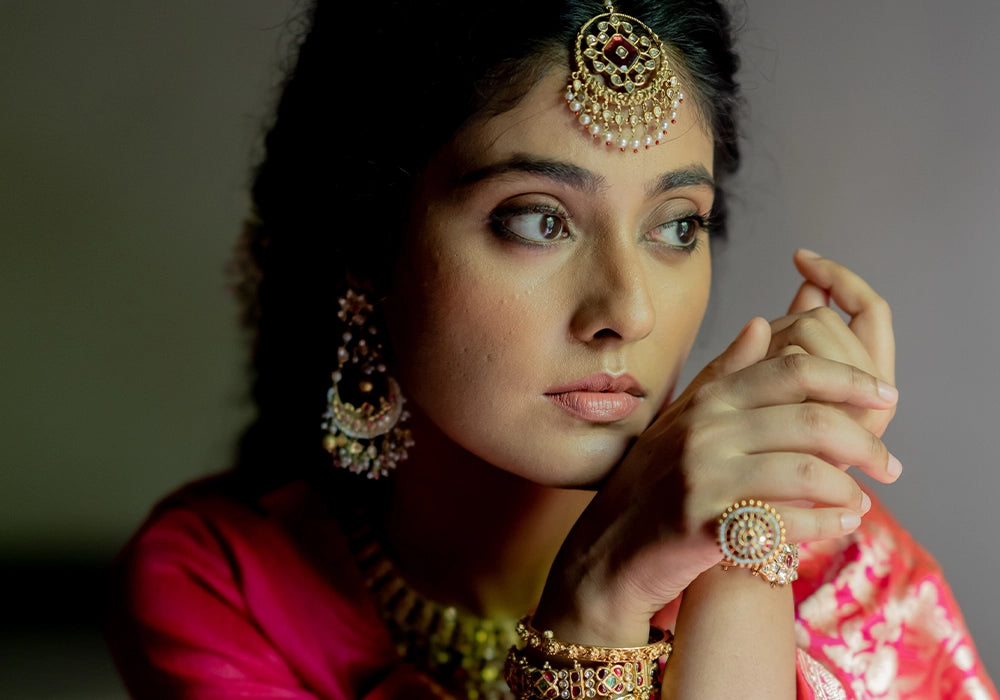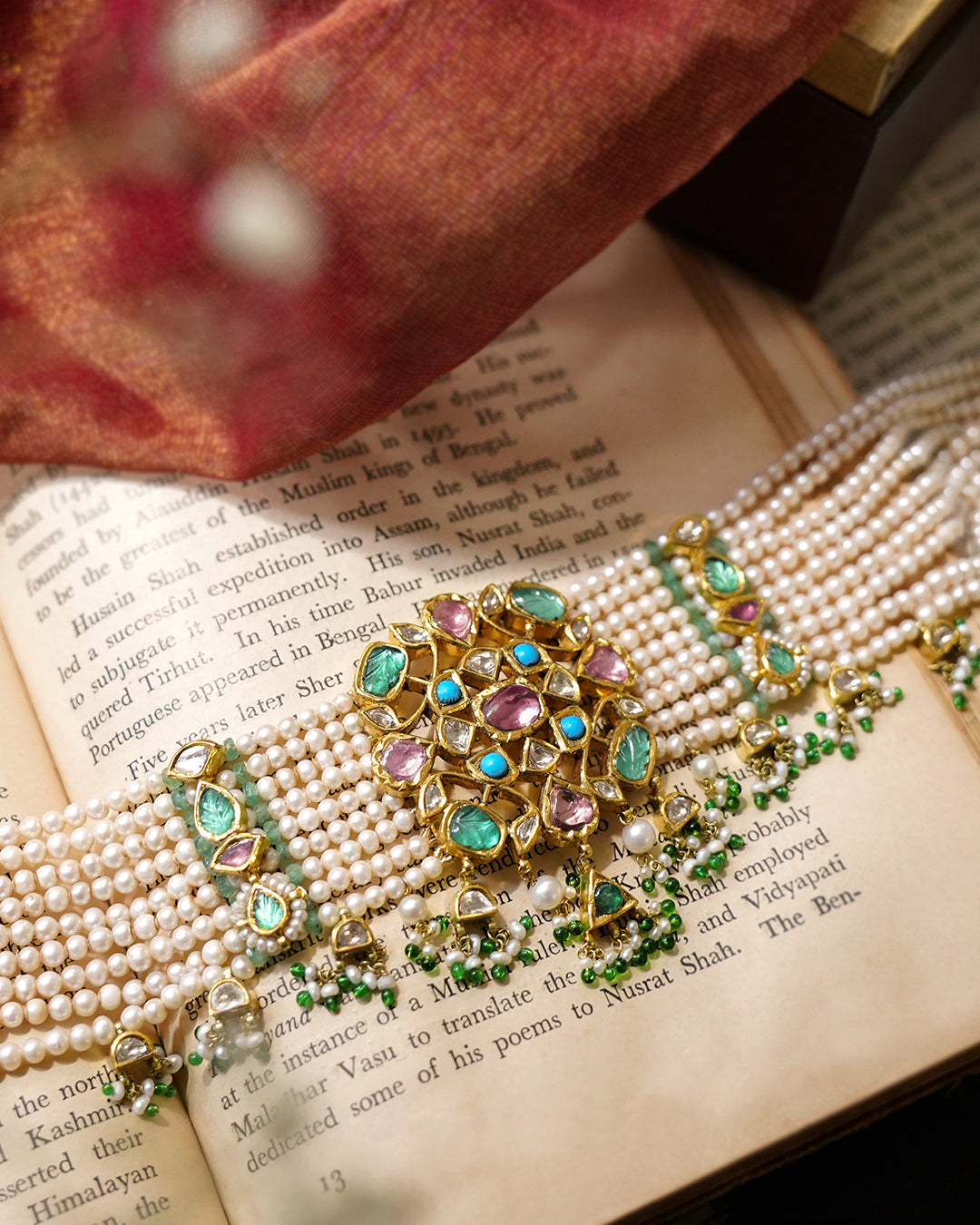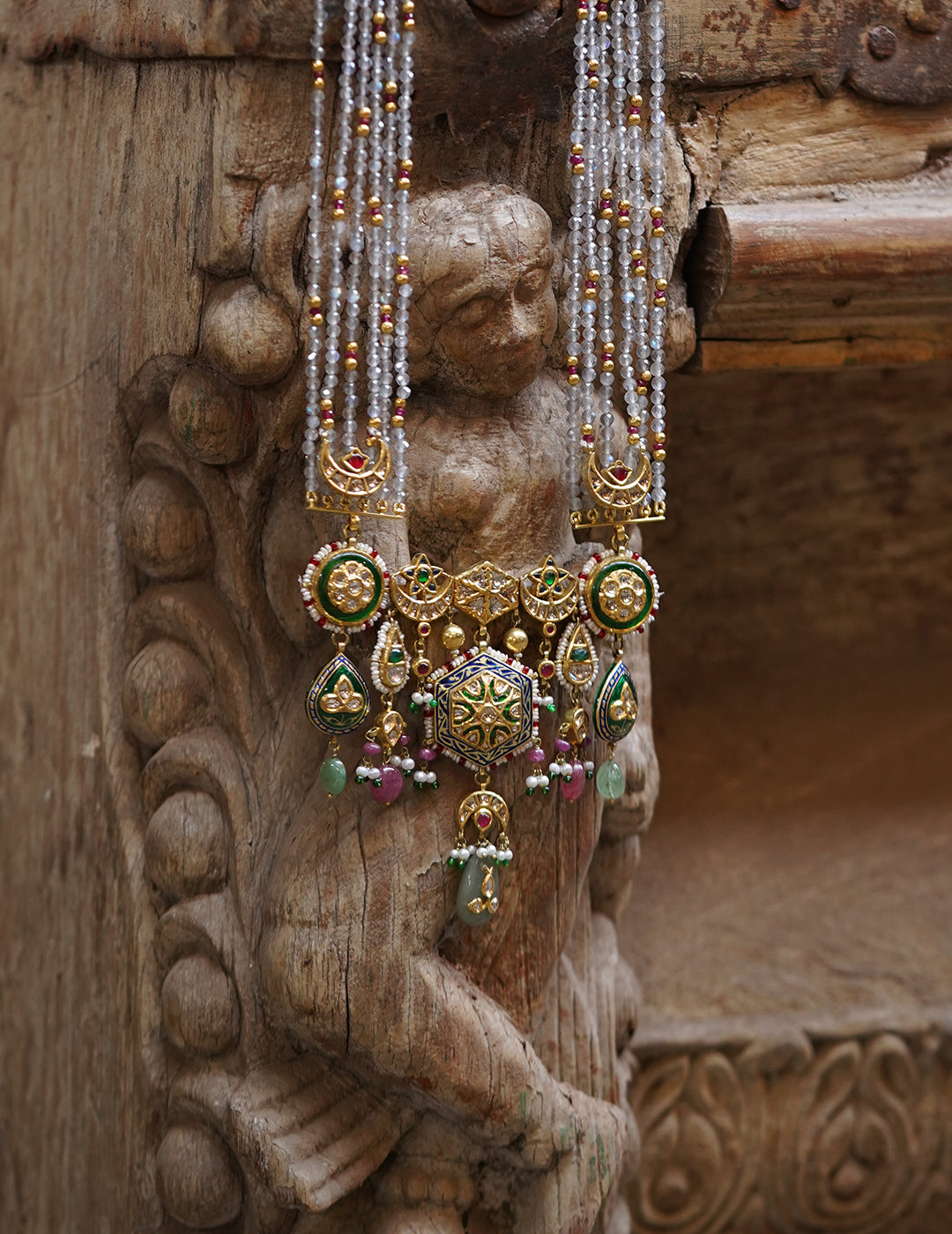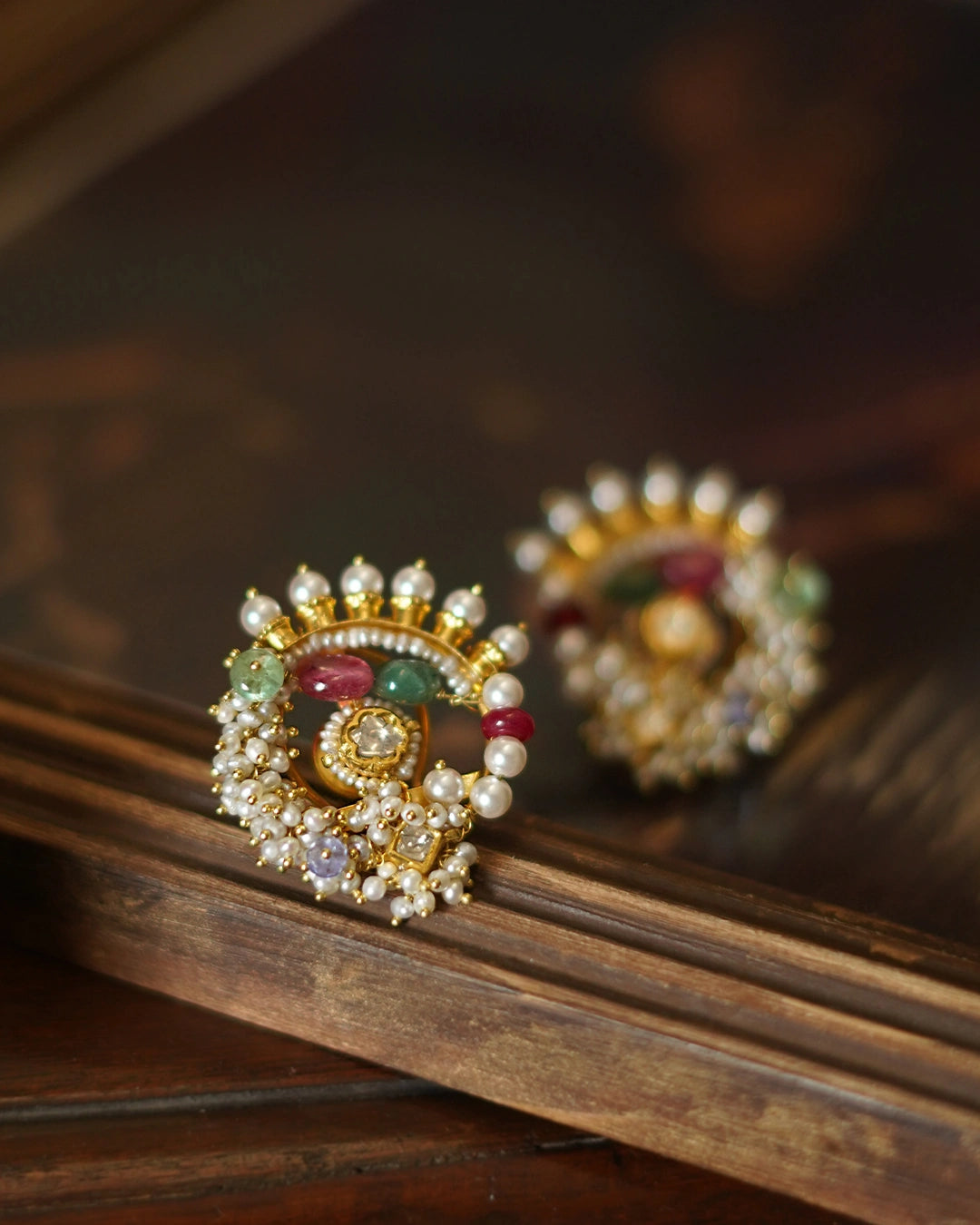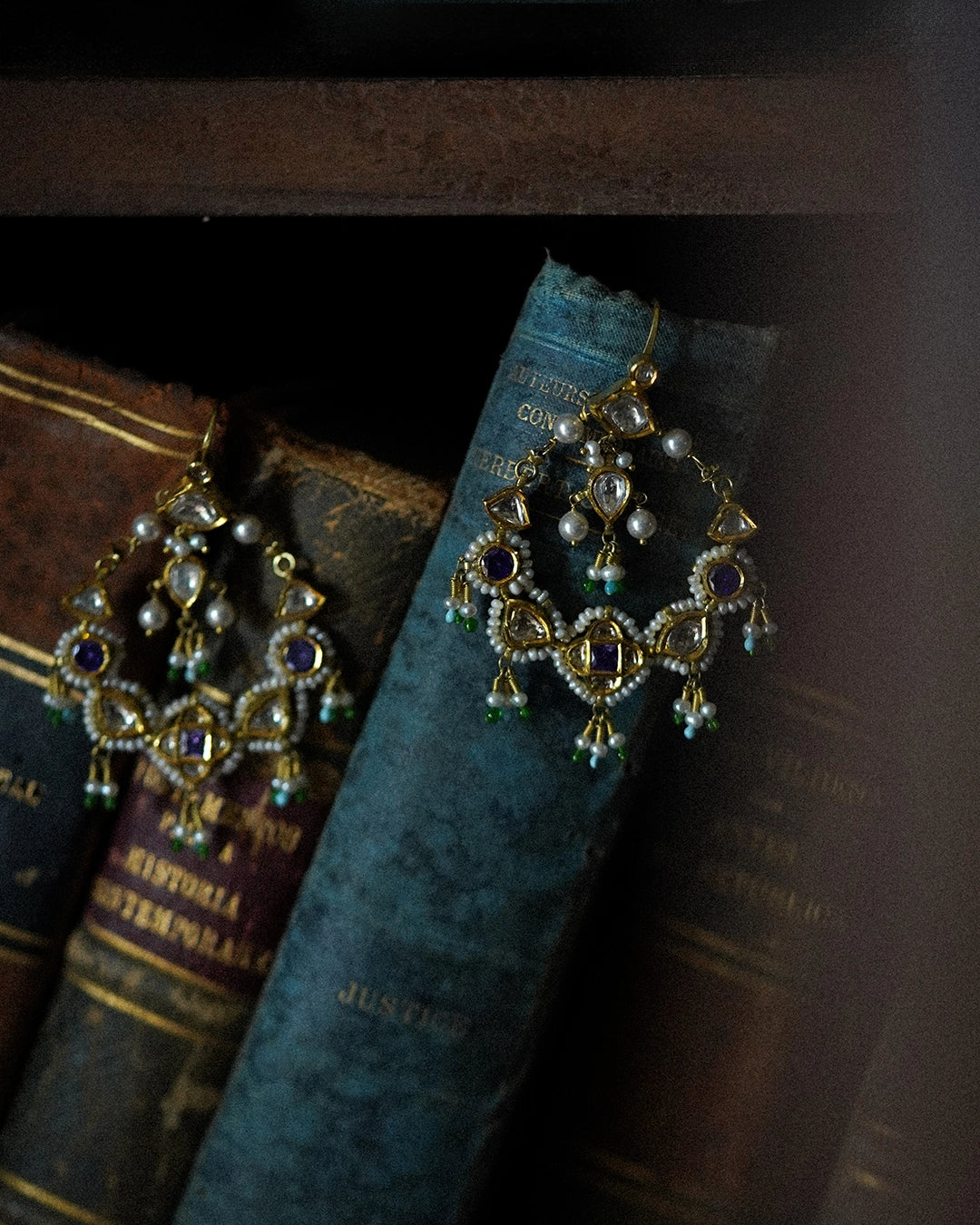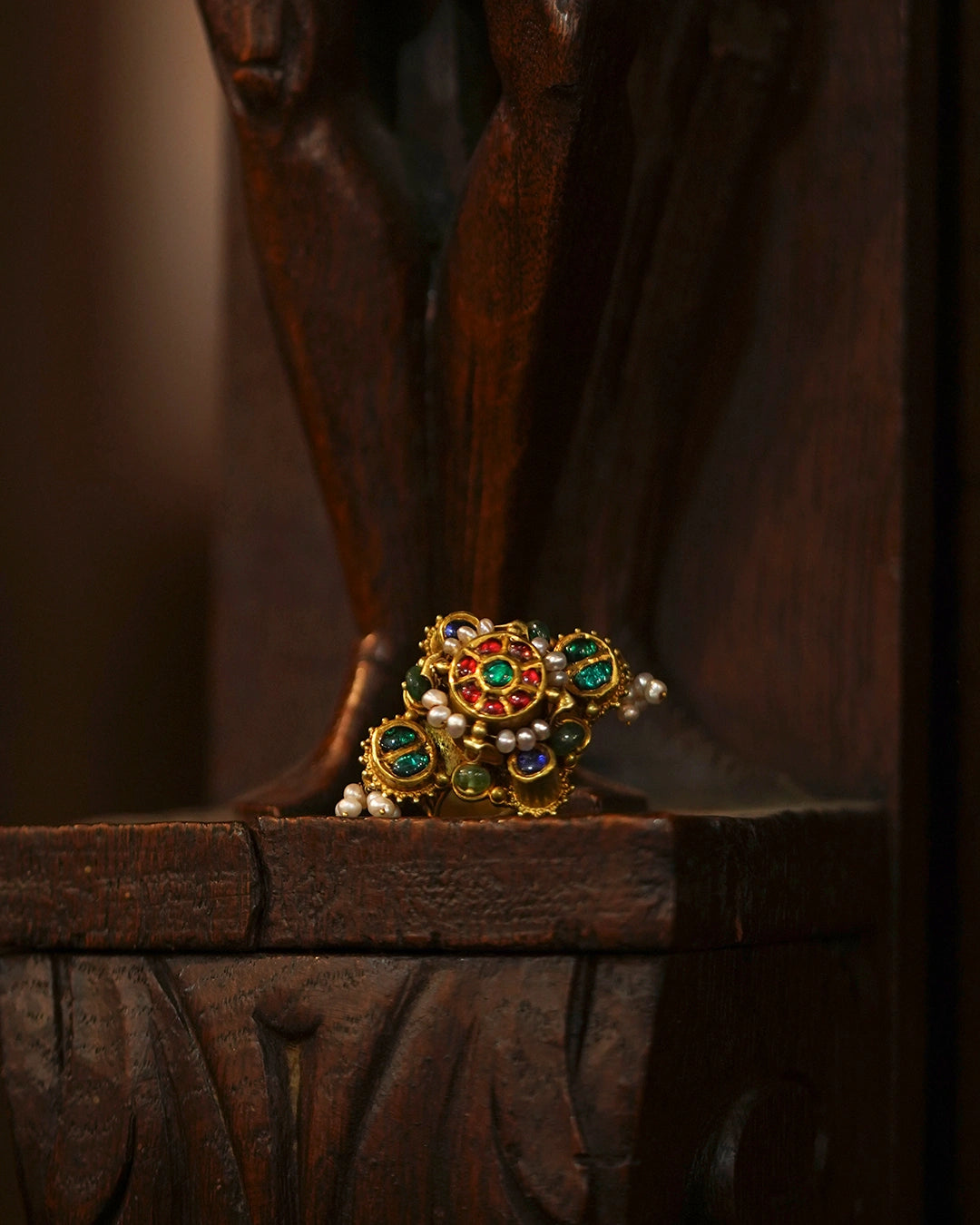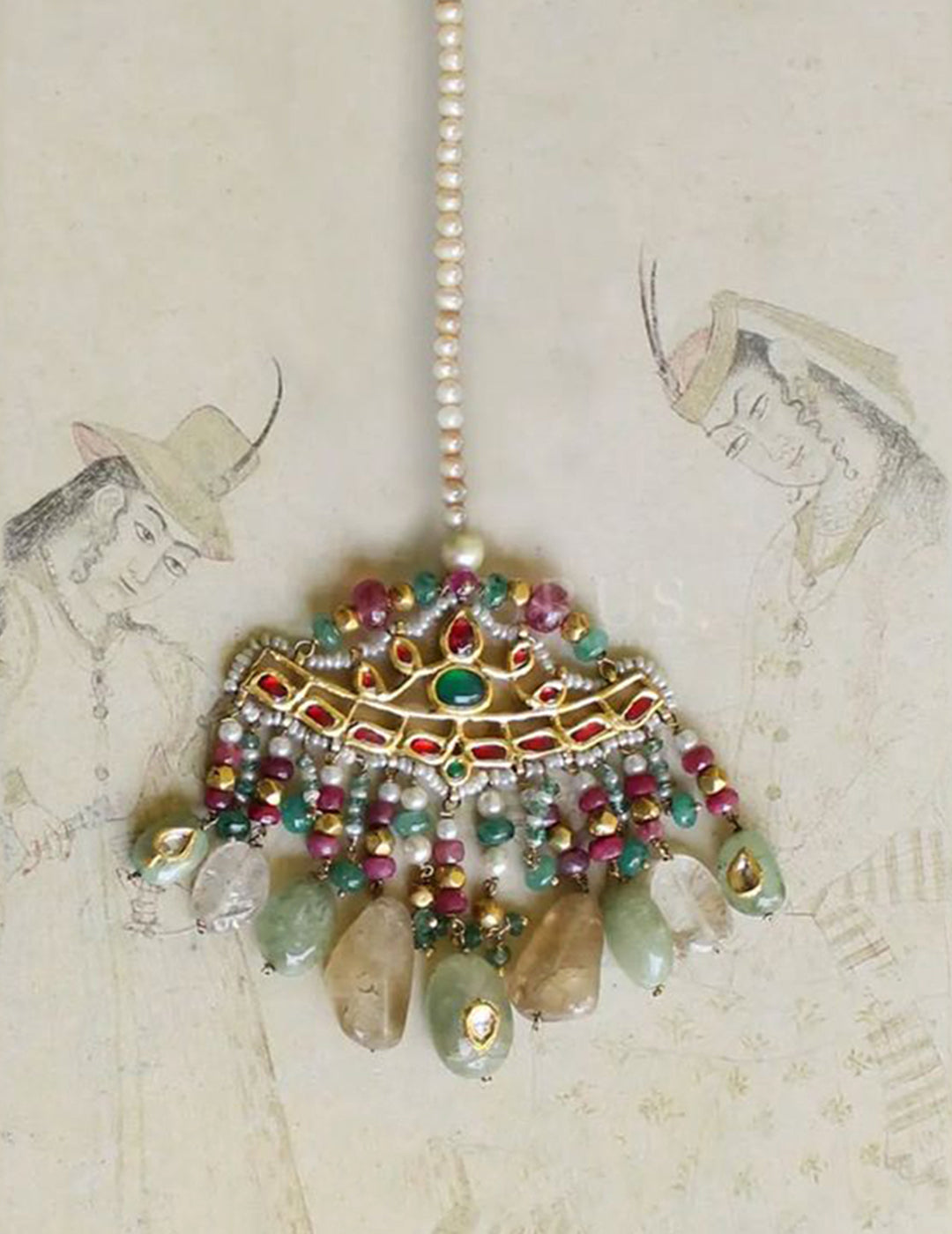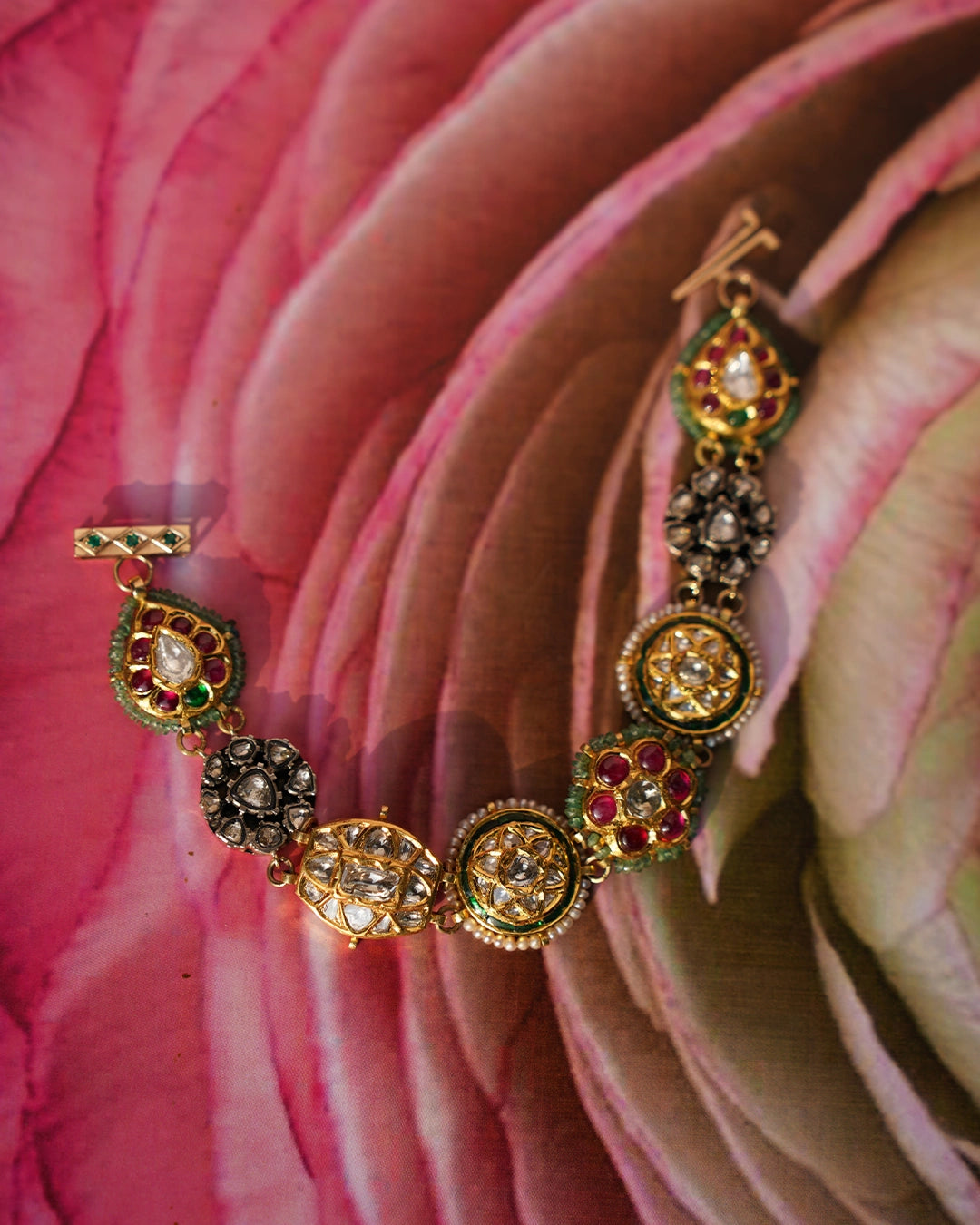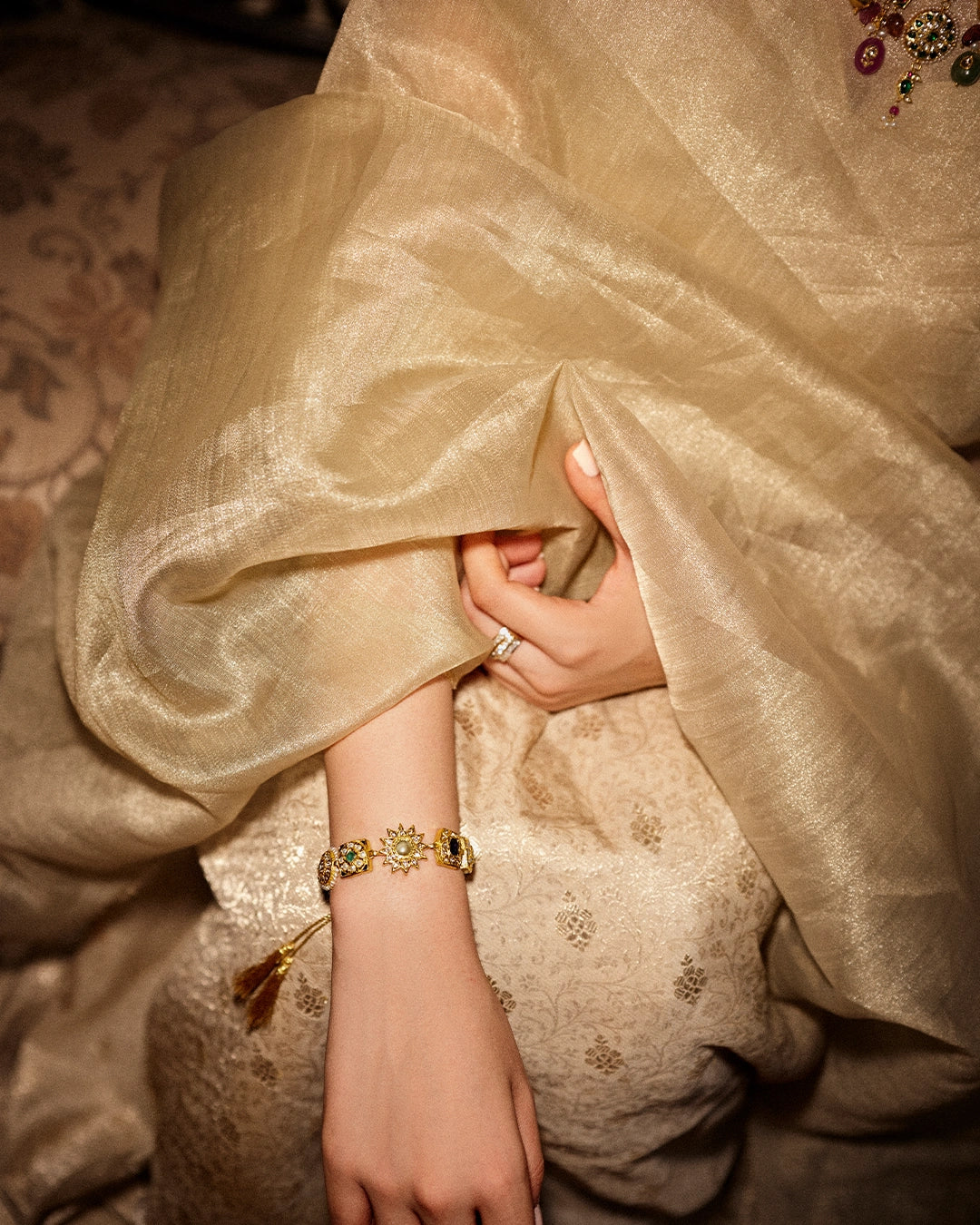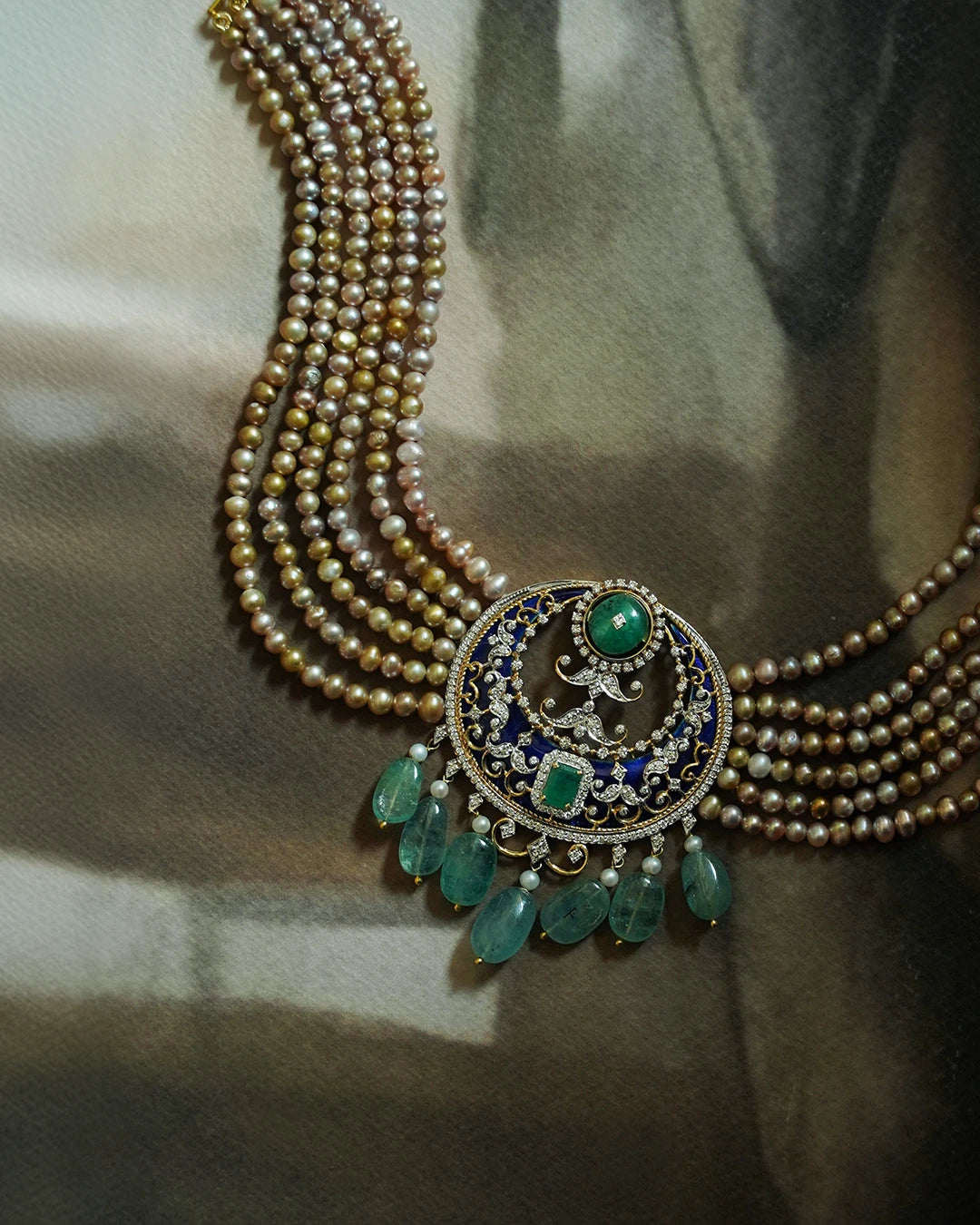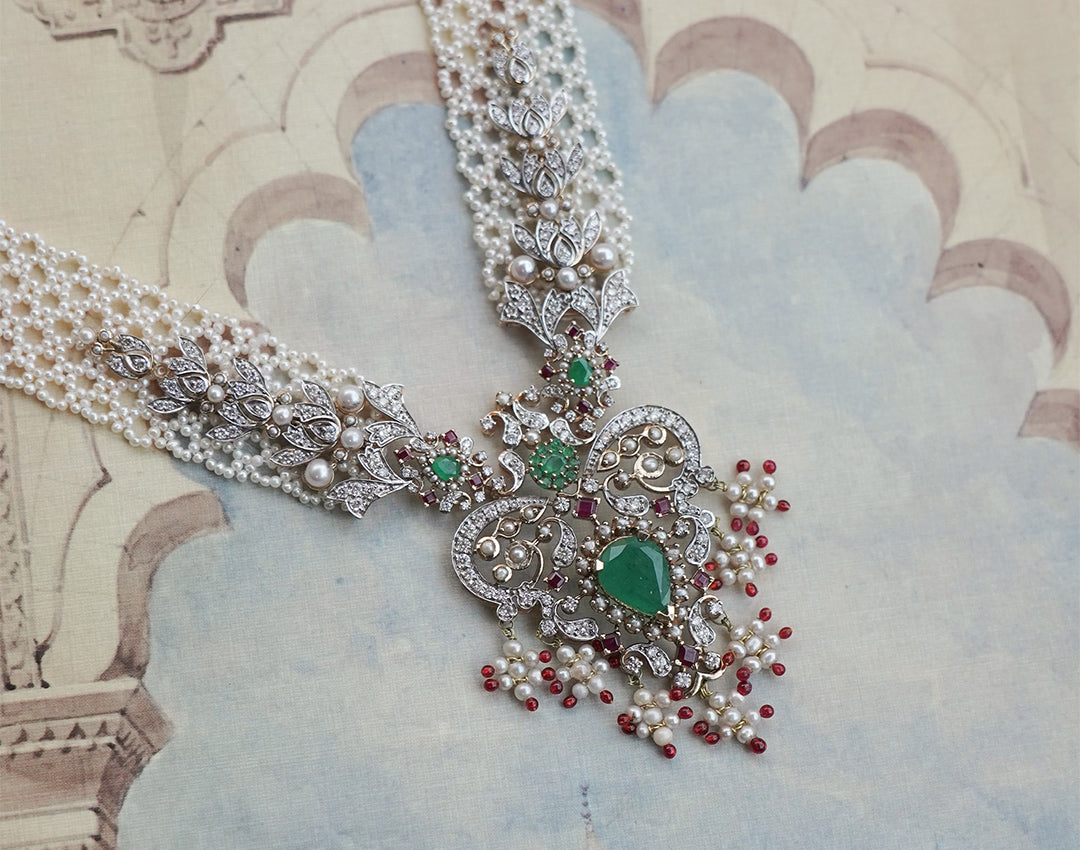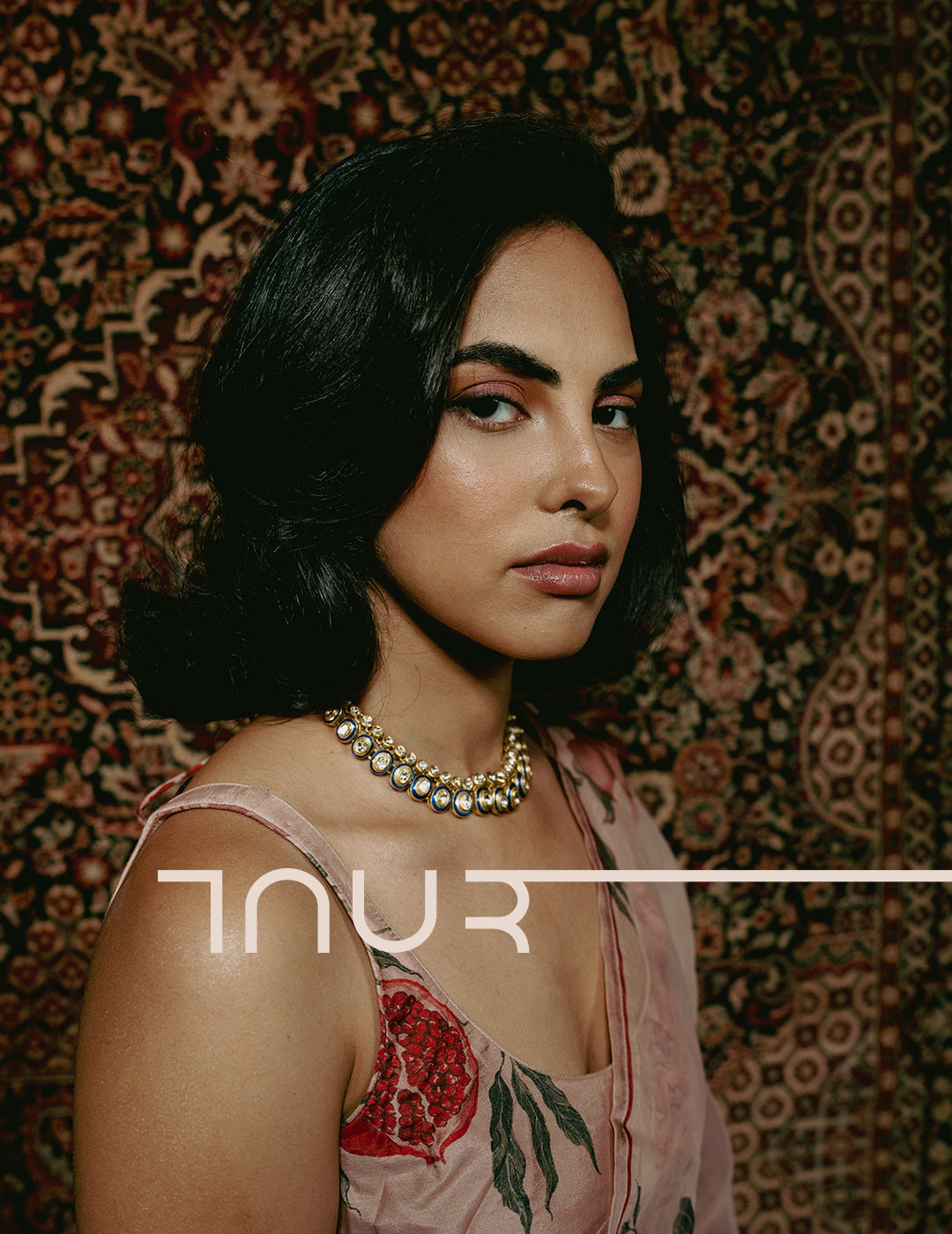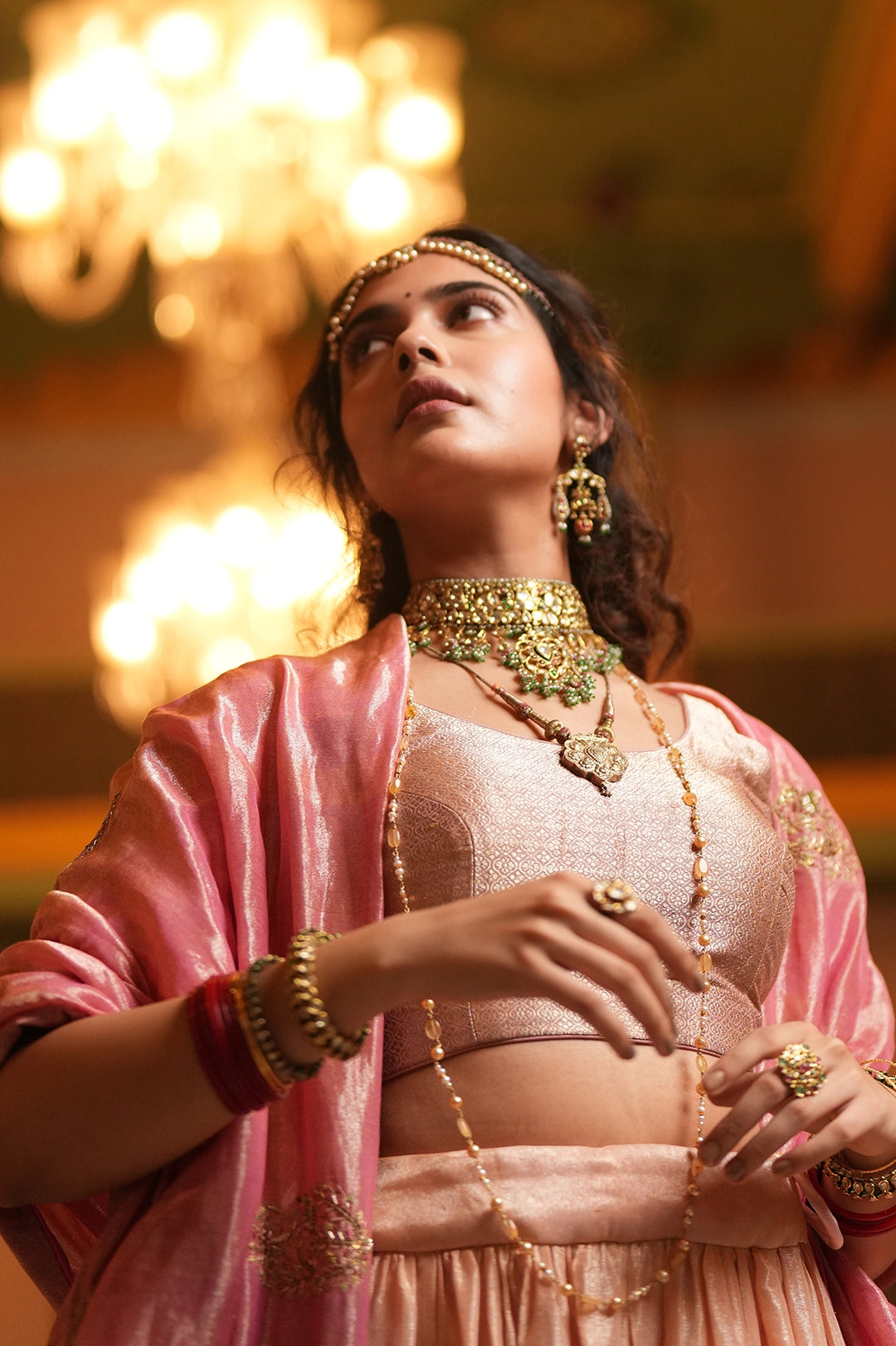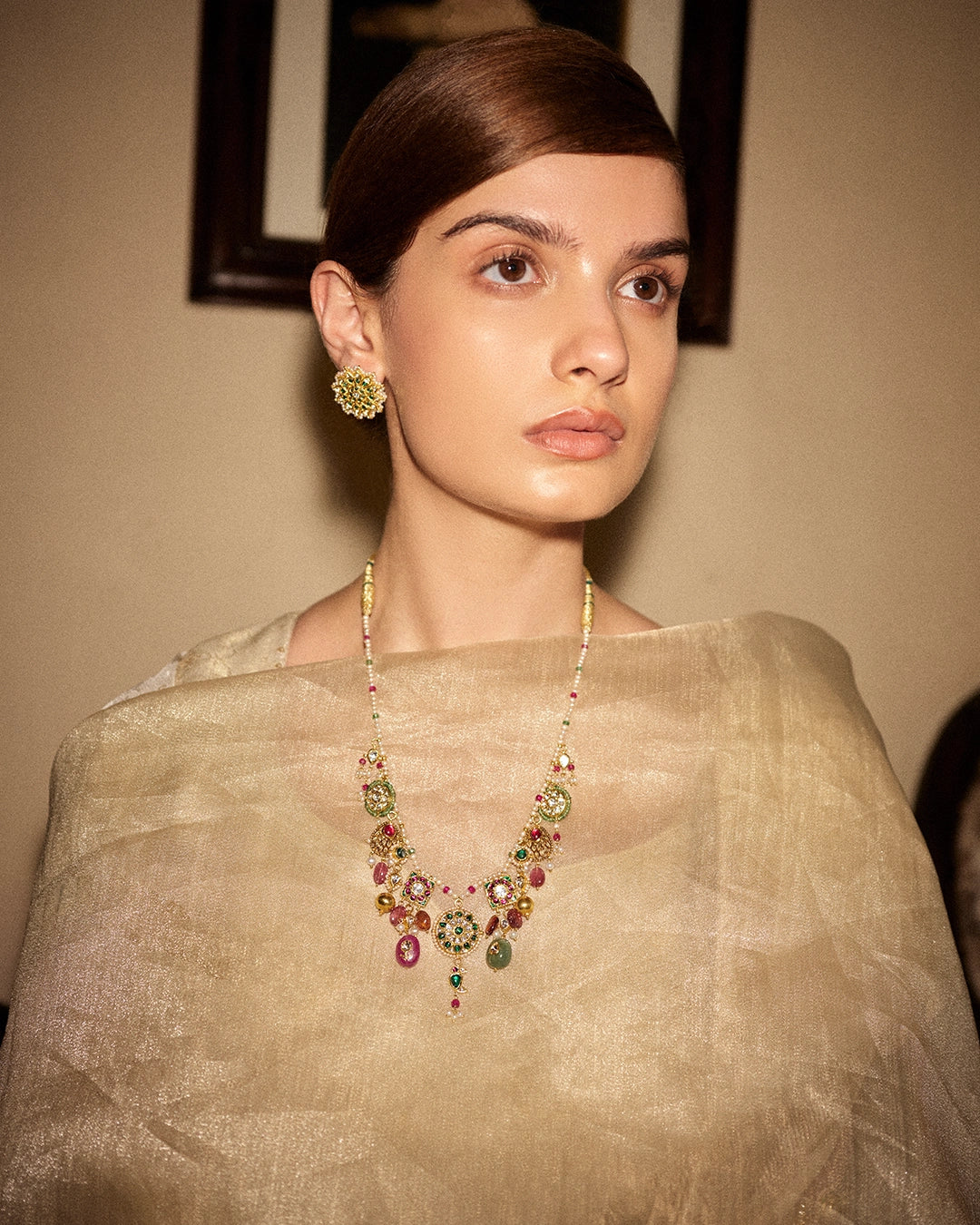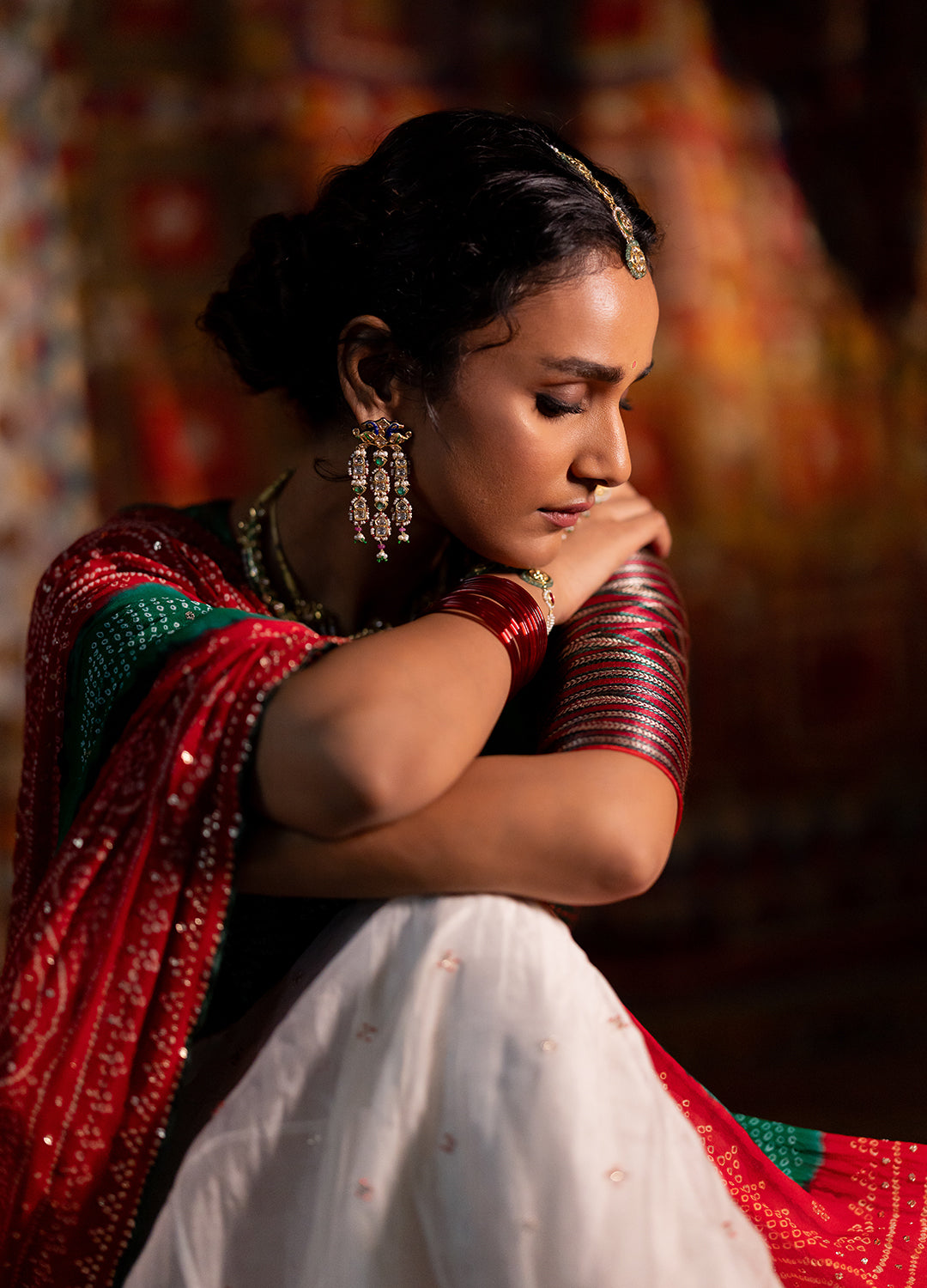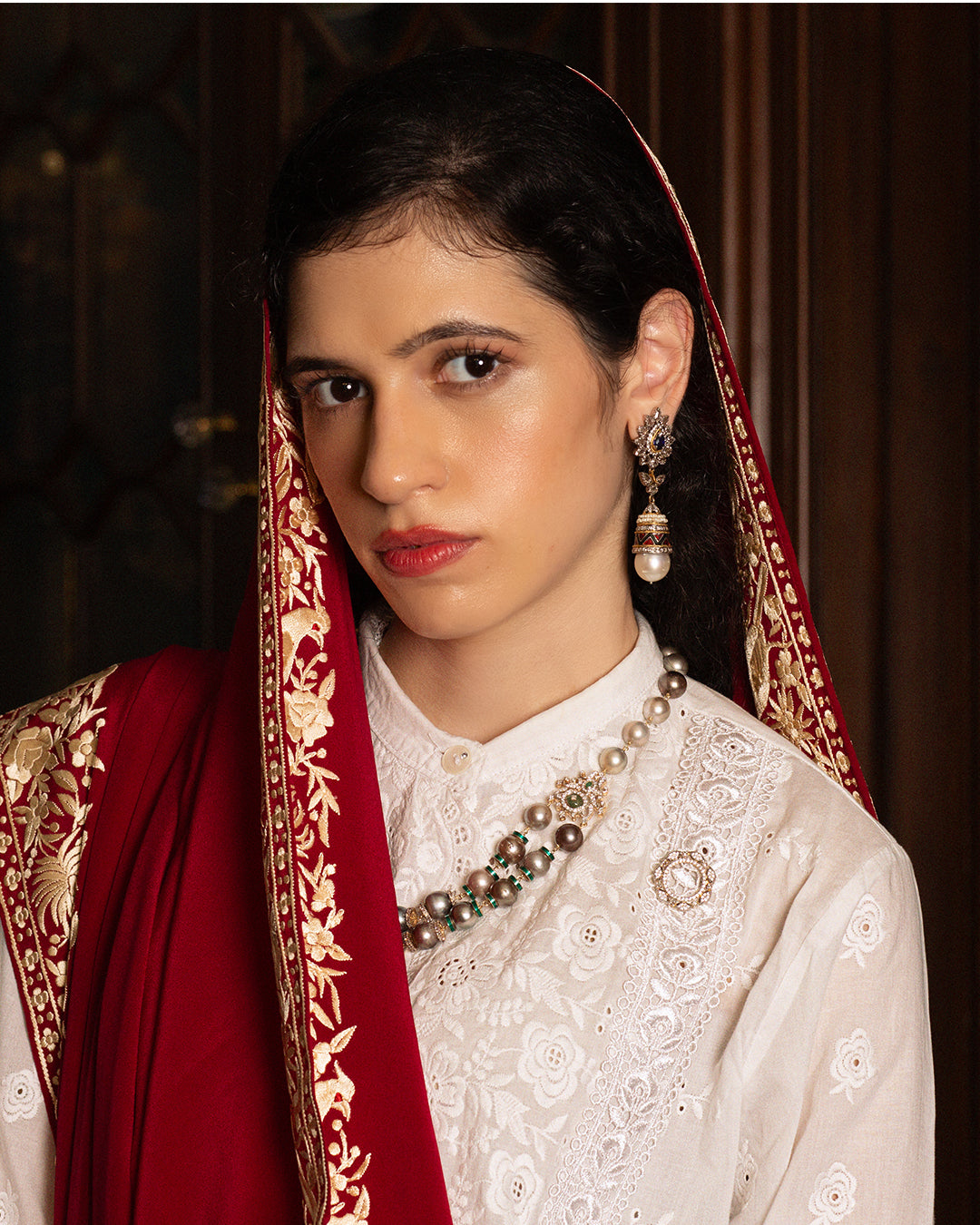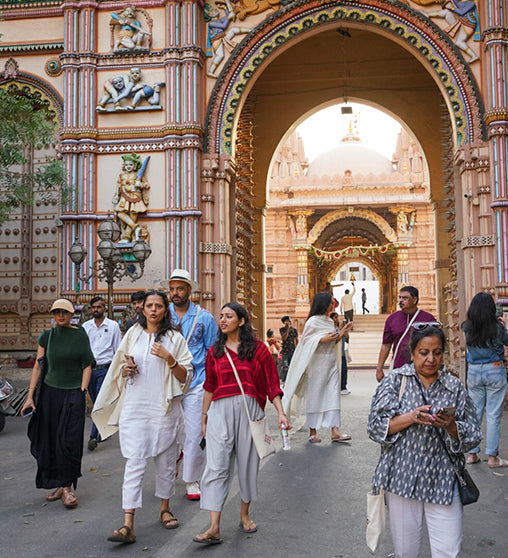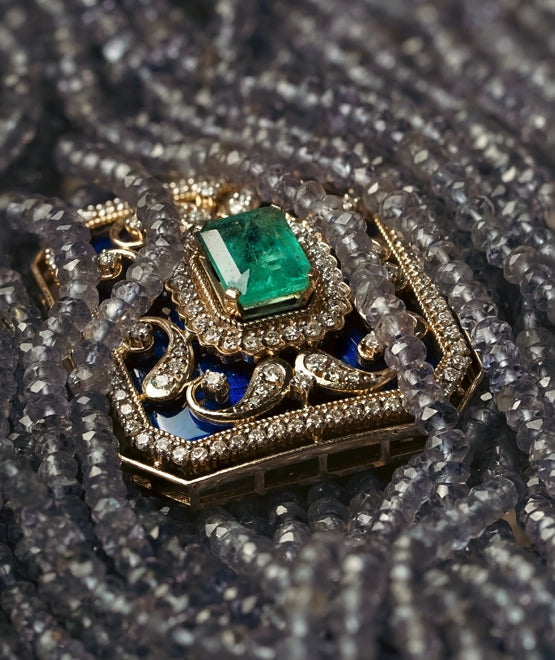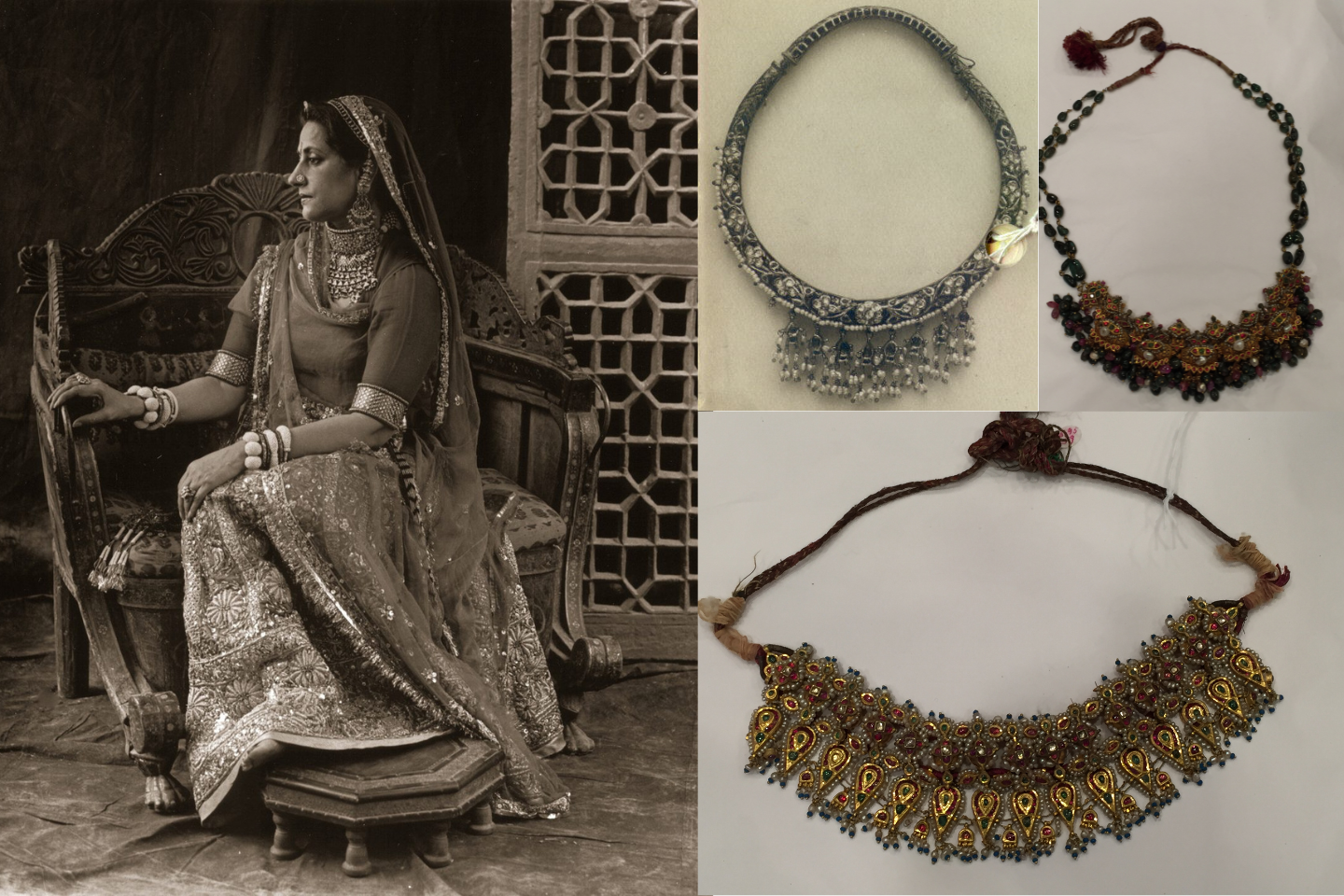Indian jewelry is composed of an enormous and intricate range of marvels. One distinctive aspect of Indian civilization is its traditional jewelry, which has a distinct cultural character. In this blog, we'll take a look at some of the most prominent Indian necklace designs in the west.
Indian Necklace Designs from the West
The western part of the country has given us a vast variety of Indian necklace designs to choose from. From a modest Hasli to an extravagant Thussi, the selection is huge in every regard. Let's take a look at some of the most popular ones.
Aadh Necklace

Rani Shri Usha Deviji Sahiba of Jodhpur. Image courtesy: Royal Archives via Twitter
The choker-like main feature and a net that resembles a curtain make up the two main parts of the Aadh, a traditional Rajasthani necklace. The oppulent preferences of Rajasthani queens inspired its creation, but it later turned into a classic piece of Rajasthani bridal neck jewelry.
Hasli Necklace

Image courtesy: The Met Museum
The name Hasli is derived from the Hindi word "hansuli", which means "collar bone," because it perches on the wearer's collarbone. The conventional Hasli is stiff and narrows towards the end in the form of a collar necklace. Others could feature a pendant while some are symmetrical. Some have enamelling on the back as well.
Javali Haar

Image courtesy: The Met Museum
A magnificent gold necklace for women that finds its roots in Gujarat, the Javali Haar is typically given to a new mother. Shapes occurring in nature and grains (javali) have an influence on this traditional Indian necklace as they stand for luck, joy, fertility, and prosperity.
Kaliganthi Necklace

Image courtesy: The Met Museum
The name "Kaliganthi" refers to the shape and meaning of this bridal necklace which is that of an amulet, where the amulet or “dodi'' refers to the individual units made of gold filigree and embellished with pearls and precious stones.
Kolhapuri Saaj

Image courtesy: Wikipedia
The Kolhapuri Saaj is a traditional gold necklace for Maharashtrian women, its name derived from the illustrious city of Kolhapur. With the "saajh ghat" serving as its main pendant, it is encircled by a number of religious images, including the 10 incarnations of Lord Vishnu. Modern designs use 10 to 12 pendants instead of the 21 leaves or pendants that traditionally adorn necklaces.
Pankhi Haar

Image courtesy: The Met Museum
An exquisite necklace in its right, the Pankhi Haar evolved during the Mughal era. The pattern incorporates natural elements or Sri Nath Krishna motifs. A single chain is used as the hook for a variety of pankhis (fan) pendants. In order for a central, larger pankhi to hang in the middle, there are typically an odd number of pankhis.
Thussi Necklace

Image courtesy: The Met Museum
Marathi women customarily wear a variety of Indian jewellery, one of which is the Thussi necklace. This gold necklace for women is worn by newlyweds and married women during weddings, festivals, and other occasions. This choker-style Indian bridal necklace has a really distinctive pattern that goes well with their traditional outfit.
